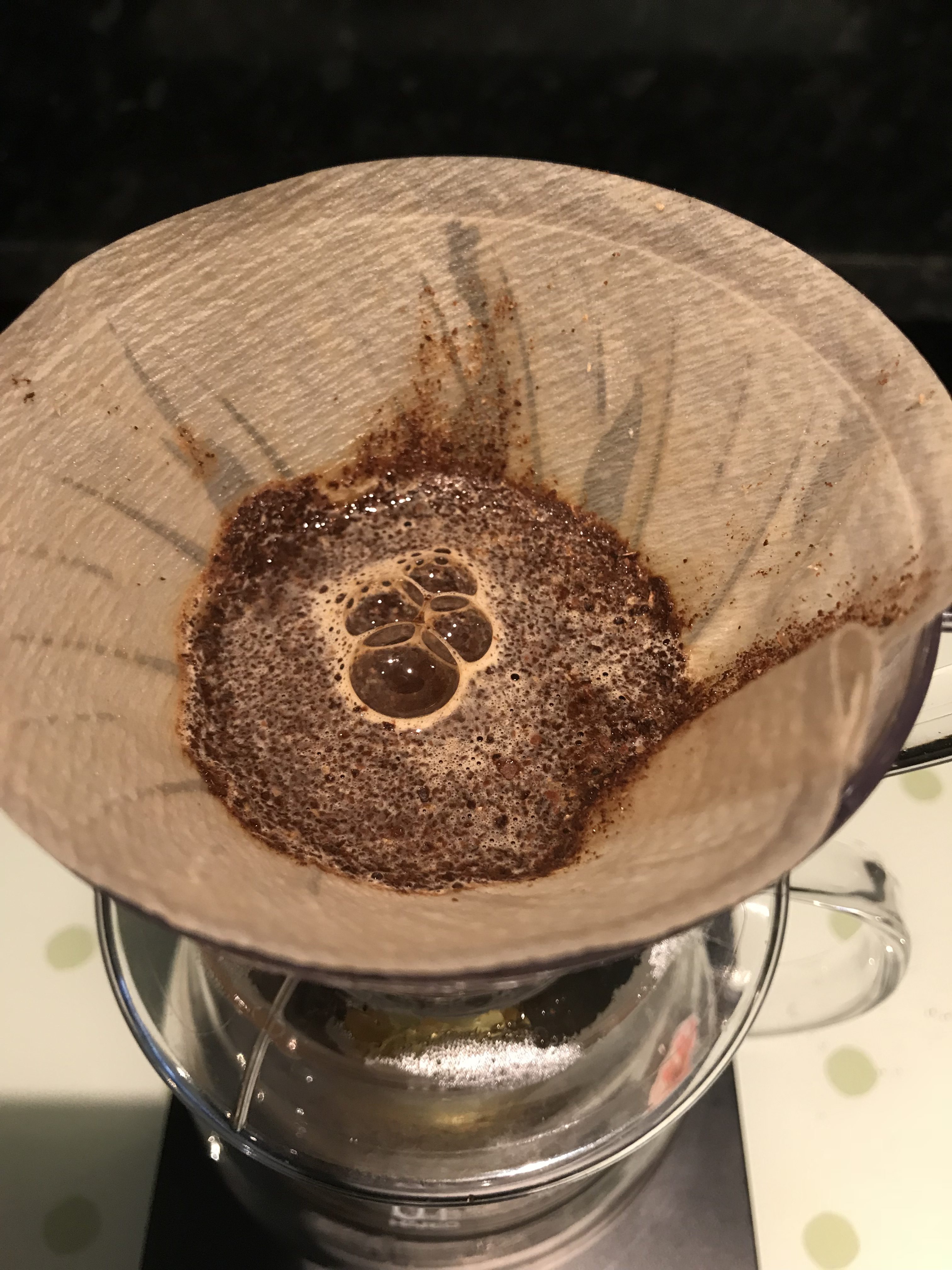17 January, 2018
V60 Drip Filter Coffee

There are many things that amaze me about coffee! For example, the work that goes into producing the perfect cup, from the farming, processing, roasting and brewing. The final product is only as good as the skills of the farmers, roasters and baristas involved at each stage. Although a flat white is my go to coffee of choice, I have increasingly explored other brew methods, of which my favourite is probably the V60 pour over or filter method. This is a method that is fairly straight forward to do at home and involves relatively inexpensive equipment. It is ideal for preparing black coffee and exploring the taste profiles of single origin beans. The thing that has most blown my mind about speciality coffee is the vast array of flavour profiles from coffees grown in different countries. I think that many of us are pre-programmed to expect coffee to have an overwhelmingly bitter taste, and that many non coffee drinkers would state that the reason they don’t drink coffee, is because they don’t like this taste. When I first had coffee prepared for me by the V60 method, I was amazed! It looked and tasted nothing like the bitter beverage that I was expecting! The colours and flavours were more reminiscent of teas. If I’d been blind folded and randomly given this coffee, I don’t think I would have necessarily guessed that it was in fact coffee!
Coffee is grown in the ‘bean belt’ (areas either side of the equator), where the conditions of climate and altitude are most ideal. However, the taste profiles of coffees from different countries within this ‘bean belt’ region range enormously. Brazil, as the world’s largest producer of coffee, tends to produce coffees with chocolate and nutty flavours. Indonesian coffees tend to be earthy, woody and spicy. The Americas often produce sweet and fruity coffees, as well as heavier, chocolatey ones. The coffees that have so far surprised me the most are those from Ethiopia, which is the birthplace of Arabica coffee. These coffees are often very floral and fruity and really show the diversity of flavours that a coffee can have.
I am now going to share with you a method to prepare a filter coffee at home using the V60 method. I learnt this technique at a homebrew course at 200 degrees Barista School in Cardiff. A lovely Barista named Lily lead me through the whole range of home brew techniques. I would definitely recommend these guys if you are interested in a Barista course (www.200degs.com).
The V60 pour over method involves extraction by percolation. Water passes through a bed of coffee, extracting the flavours.
You will need the following equipment:
- V60 coffee dripper – this is a type of filter funnel. They are reasonably priced and available to buy at speciality coffee shops or online.
- Paper filters (to fit the V60)
- A vessel or cup to collect the coffee – I use a glass serving vessel but you can use a mug. The key thing is that you pre heat the vessel with hot water first.
- Digital weighing scale and stopwatch – I use a coffee drip scale that incorporates the scale with timer, but you can use a kitchen scales and stopwatch on your phone or watch.
- Kettle – I use a pouring kettle with a very narrow spout, which allows water to be poured slowly and steadily, but this is not essential.
- Medium ground coffee – this should have the appearance of caster sugar. For the freshest cup of coffee it’s best to grind beans at home but you can buy coffee pre ground to use with filters.
Method – you will need 15g ground coffee to produce 250g of coffee
- Fold the filter paper and place into the V60 filter and sit the V60 on top of the collecting vessel.
- Pour hot water through the filter paper and into the collecting vessel. This is a very important step as it removes the ‘paper’ taste and pre warms the glassware.
- Discard the water.
- Place the apparatus on the scale and add 15g of medium ground coffee. Shake the apparatus gently to level the coffee.
- Tare the scale and start the timer.
- Pour 30g of hot water (approx. 94*C – leave a freshly boiled kettle cool for a short time) over the coffee and leave for 30 seconds. This process is called the ‘bloom’. When the hot water hits the coffee, carbon dioxide gas is released. There is no hard scientific evidence that this should be part of the brew process but it adds to the theatre of it all and is the stage when the aromatics are released.
7. At 30 seconds add 110g of hot water (taking the total to 140g) 8. At 1 minute 15 seconds add a further 110g of hot water (taking the total to 250g) – the water should be poured in a slow continuous stream and should be poured directly onto the coffee, avoiding the paper and walls of the V60 dripper. I always pour in a circular fashion, in a doughnut type pattern!
9. At approximately 3 minutes, the water should have completely filtered through the ground coffee and you are ready to serve! Remember to pre warm and mugs!
The amount of coffee, the grind of the coffee and the contact time are crucial, so being precise in measurements is key.
If the water filters through too slowly, the coffee will be over extracted and may taste bitter. To overcome this, use coffee that is ground more coarsely.
If the water filters through too quickly, the coffee will be under extracted and may taste sour. To overcome this, use coffee that is ground more finely.
This is my preferred method with the V60 dripper. Different Baristas may have slightly different variations of this but the overall process would be the same.
Happy brewing!





